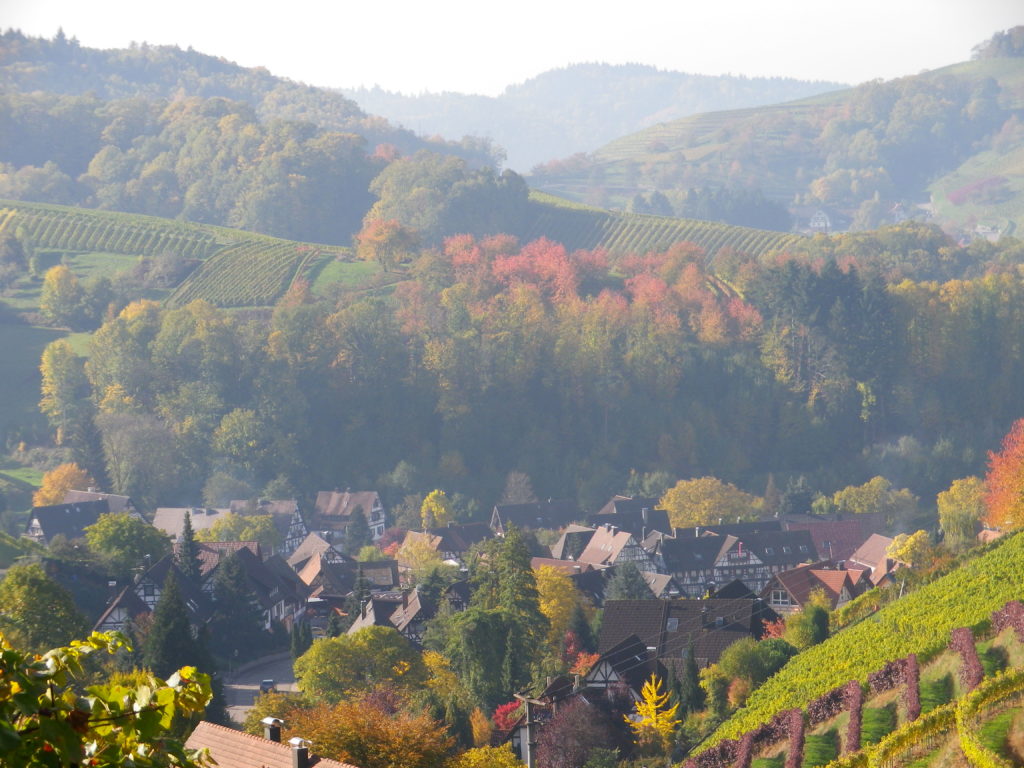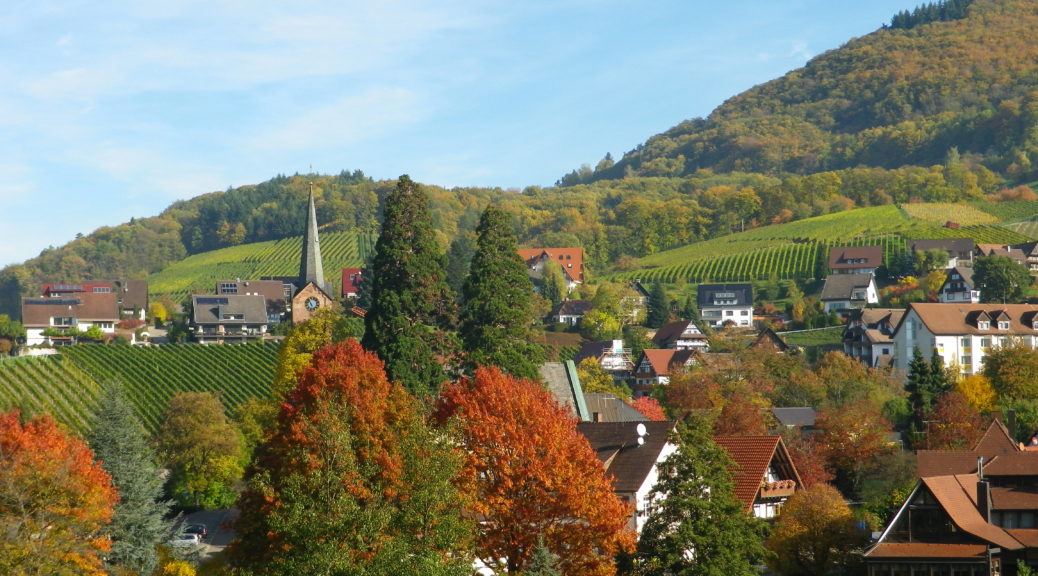Imagine a Christmas tree lot on a crisp day in December. Then recall the wonderful smell of pine and pitch, with needles crunching underfoot, releasing even more fragrance as you walk along, searching for that perfect Christmas tree, and you have a fair idea of the first leg of the Ortenauer Weinpfad in the magical Black Forest.
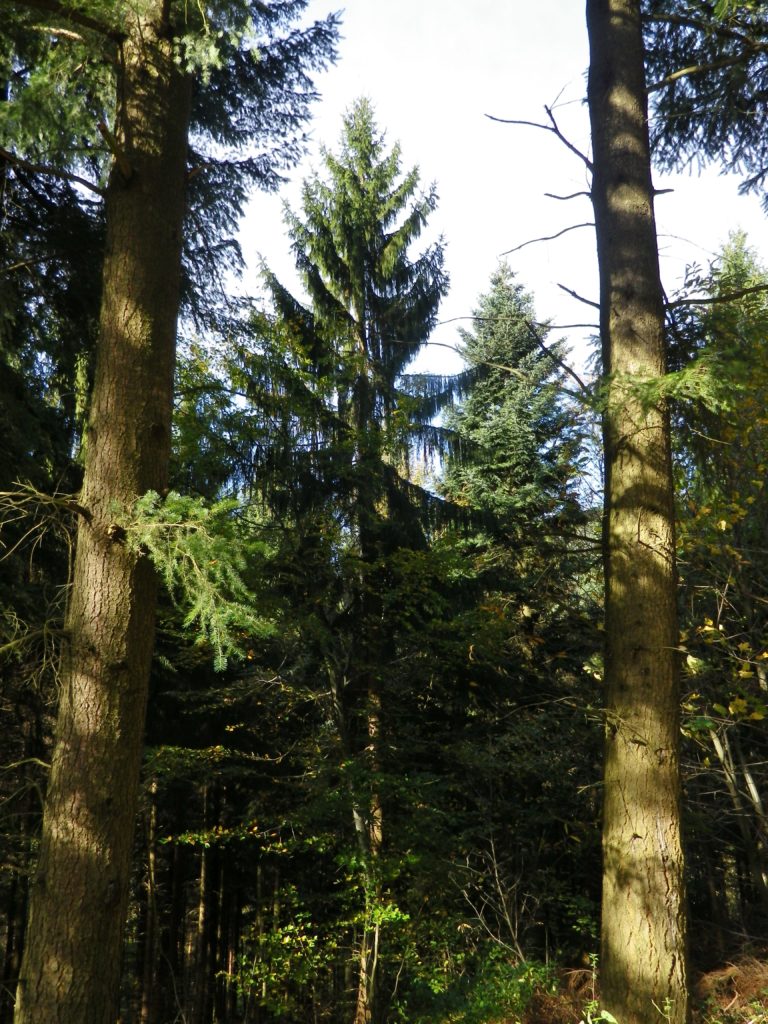
Starting at the old red sandstone town hall (Altes Rathaus) in Gernsbach, this trail quickly leaves the charming riverside village and begins a steep climb uphill through the woods to Palace Eberstein. While there is a terrace café, not to mention two restaurants and a tasting room for its wines, like a last-minute Christmas shopper on a mission, I stopped at the top of the castle vineyards only long enough to admire the view of the upper river valley and pine clad hills, and take some photos. From the palace, the climb continues through the forest. As the trees thin out near the top of the ridge, fantastic views north and west onto the Rhine River valley appear, just before the descent into opulent Baden-Baden begins.
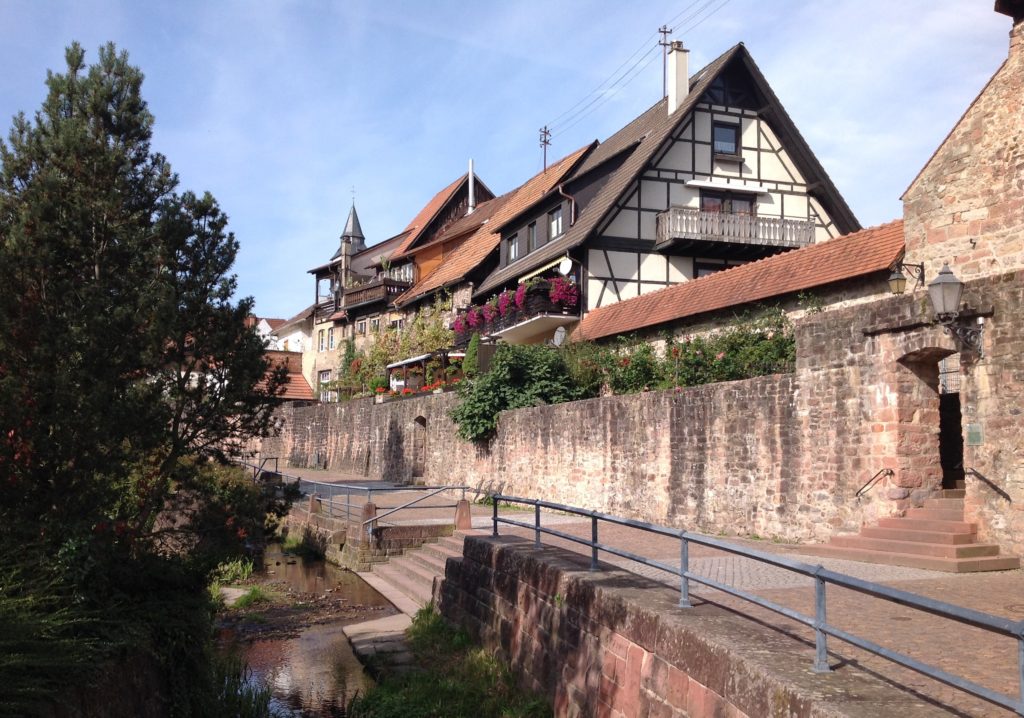
This downhill section of the trail contained stands of majestically tall and straight fir trees. As the trail meandered along the contours of the steep hills, the scent of pine became more pronounced, and in the quiet morning the special music of wind through the branches filled me with a sense of peace and goodwill.
Then, best of all, I got an early Christmas present. Right along the path is a spring, the Honiggraben Brunnen, the first of many along this trail. Cold, clean-tasting, delicious water is the best feast of all to a hiker. While there is a weingut and weinstube just a couple hundred meters off the trail, it was closed that day. No matter, I had more spring water and continued through the hamlet of Eckhoefe, down the hill to Baden-Baden, coming out just above the Russian Church.
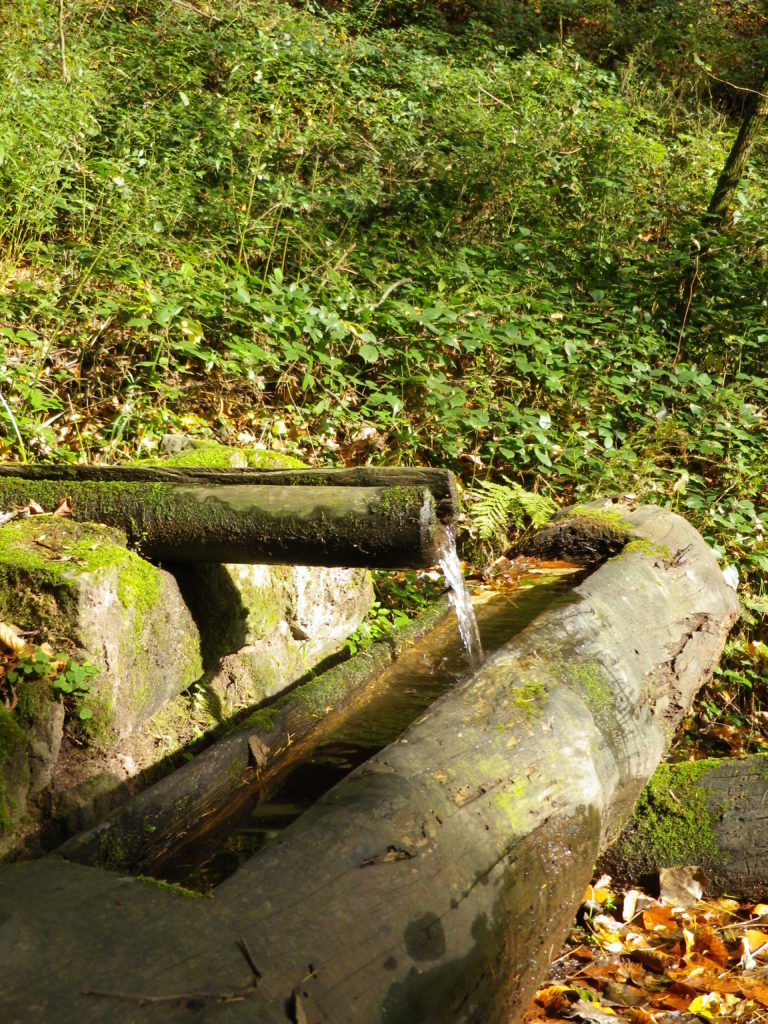
Once in Baden-Baden, urbane civilization replaced wild nature in a genteel way. Baden-Baden, formerly a favorite watering spot for dukes, kings and emperors, still has an old-world charm about it. As the trail crosses the Oos creek, it comes to the renowned Lichtentaler Allee, the 19th century in-place to stroll or ride. Lined with old trees, and elegant villas of days gone by, the Lichtentaler Allee follows along the manicured banks of the creek, to the Kurhaus Colonnade, where you can window shop, adding to your wish-list for Santa. (Wish is the operative word here for most hikers. The high-end shops’ prices would make Scrooges of us all.) As the trail climbs out of Baden-Baden, it passes the Stourdza Chapel with its candy-caned-like bands of masonry, its gift to you: a glimpse of Baden-Baden, and the enchanting hills behind it.
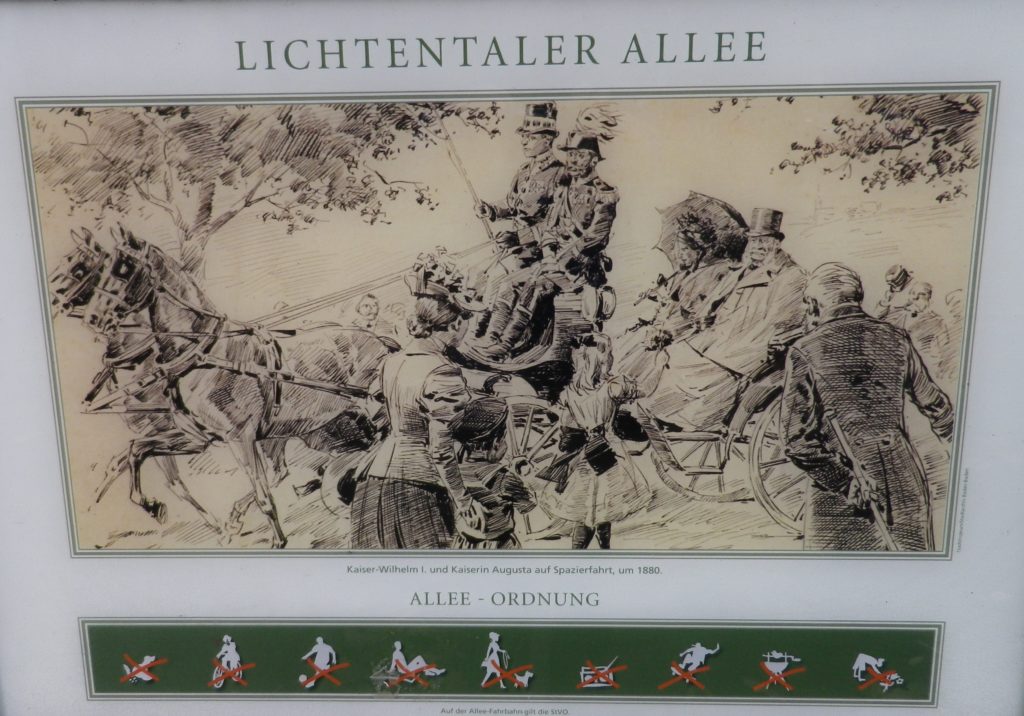
South from Baden-Baden, the trail continues in a still forest, through secluded valleys. The Gruenbach valley, with its ponds, was a true watershed. Sounds of tinkling water fell as regularly on my ears as my soft footfalls on the spongy earth.
From the Nellenberg hill, the trail overlooks what is called Rebland, or grape-land. From this point above Varnhalt, through Neuweier, to Buehlertal, the hike through the vineyards offers magnificent views, even if only dimly perceived through the mists that day. As if the views across the Rhine River valley to the Vosges in France weren’t enough, there are views of miles of vines, now being vinified, soon to be magically transformed into gluhwein, a favorite holiday-season mulled wine drink.
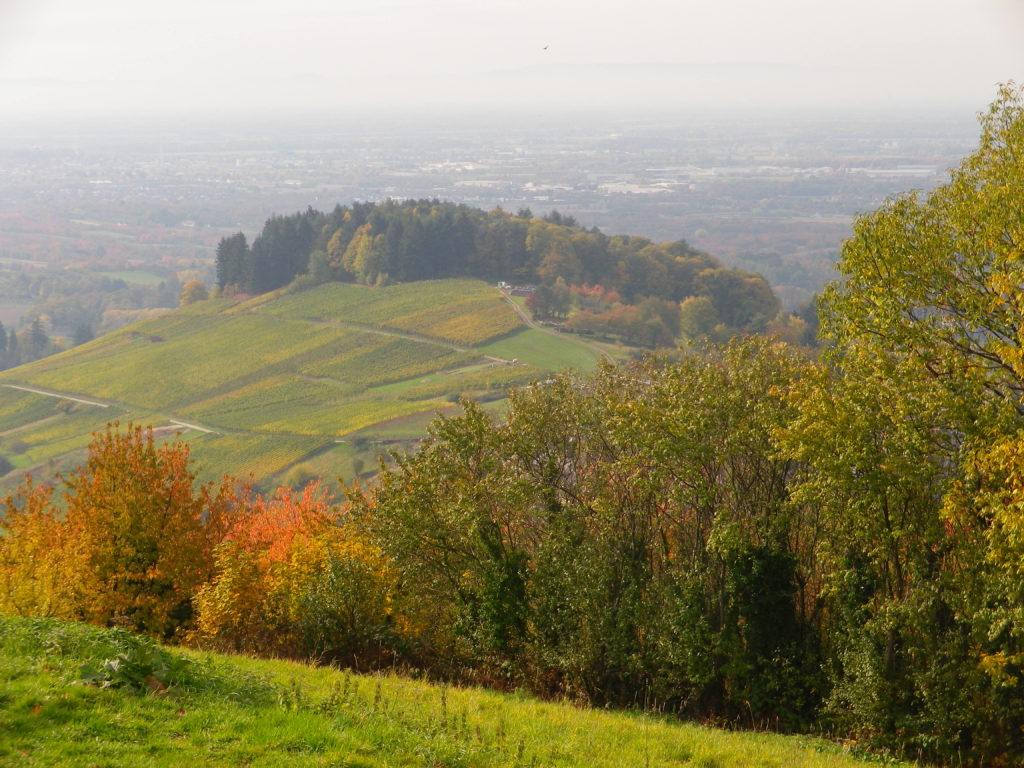
Several kilometers through the vineyards, interrupted only by passage through the village of Neuweier, is marked by occasional huts or isolated bench, and memorials. This bountiful landscape has been deeply appreciated over the centuries by the folks who have lived here. One of the most charming monuments was a miniature Black Forest village set onto the face of a rock outcropping, complete with a little train track, weaving its way over “hills” and bridges over “valleys.”
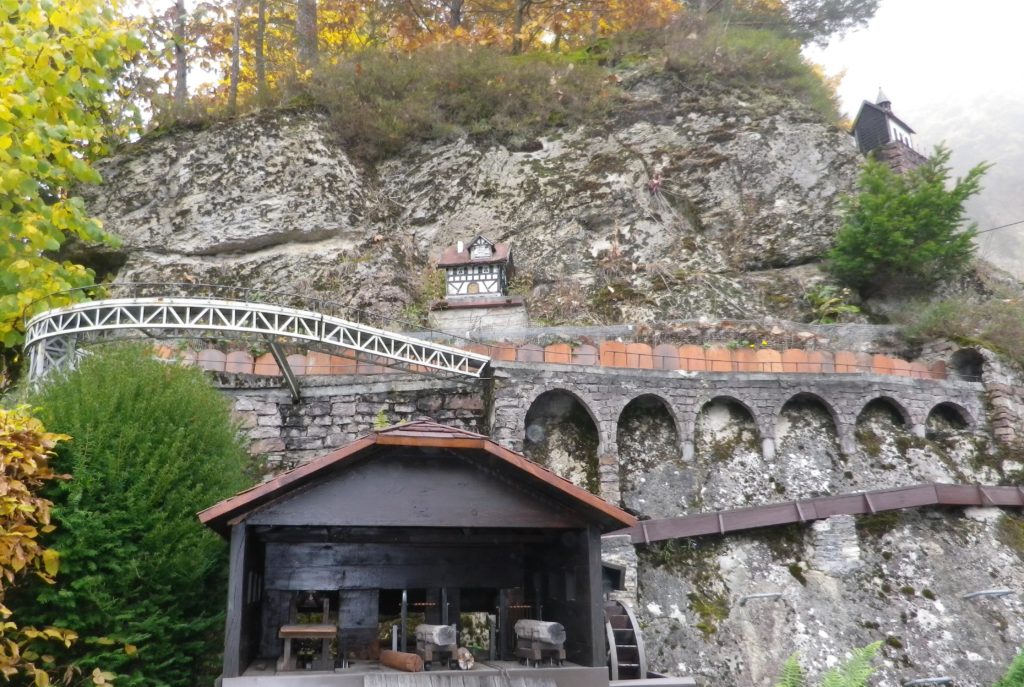
Winding down a vine-covered slope into Buehlertal, the trail comes to a small gem nestled in the floor of a narrow valley. Crooked lanes, old buildings and little streams tumble down and through the heart of the village. The trail leads upward out of the valley, to Alt Windeck, a castle that dominates the territory below it. It now reigns over a co-located tavern, café, and hotel. It is a very atmospheric (albeit very popular) place to take a break from hiking, as many trails converge here. But, taking advantage of gravitational forces, I continued downhill from the castle through woods to Neusatz, a quiet village lying below it.
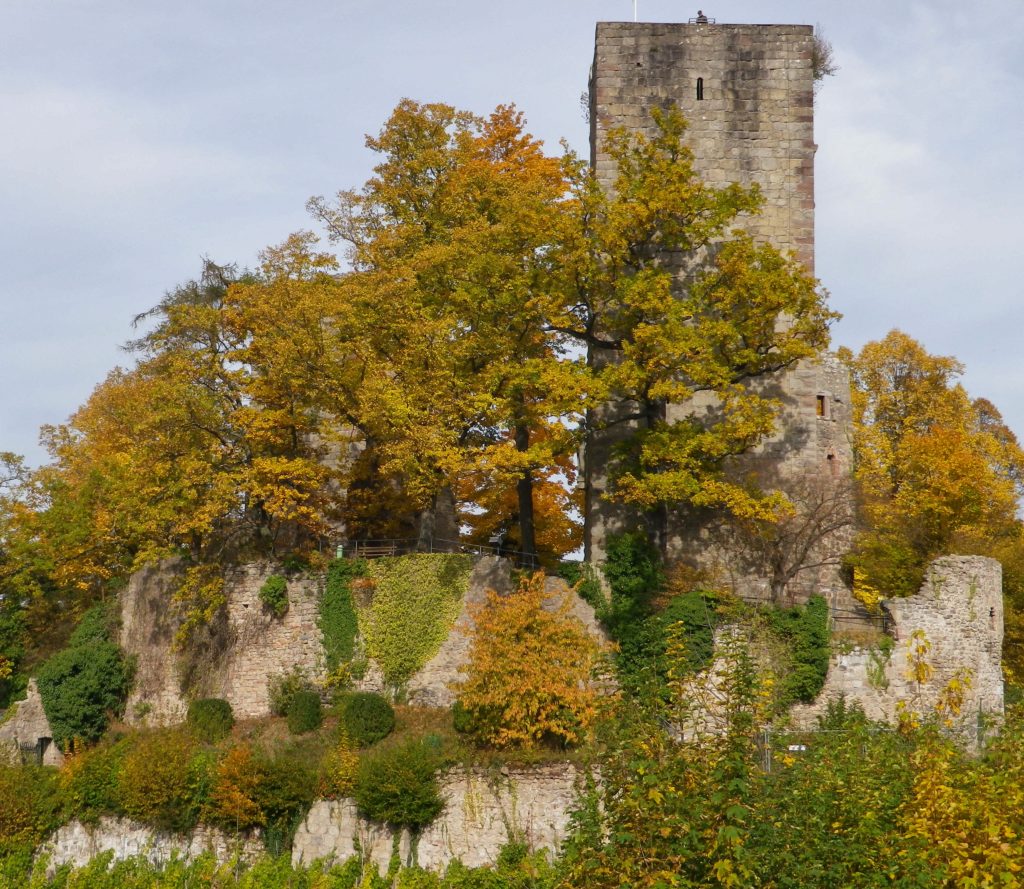
Soon I would pass the castle’s twin: Neuwindeck, on my way to the delightful village of Sasbachwalden. Not only is this town home to Alde Gott, a famous wine and brand firm, it is also set in some of the loveliest scenery in this area of the world. From the vineyards, the views are often dramatic, the glimpses of villages intimate. It was perhaps my favorite part of the northern trail, and about half-way along this 101-kilometer route. It is a great place to stop before picking up the trail south to Kappelrodeck and beyond at some later date.
